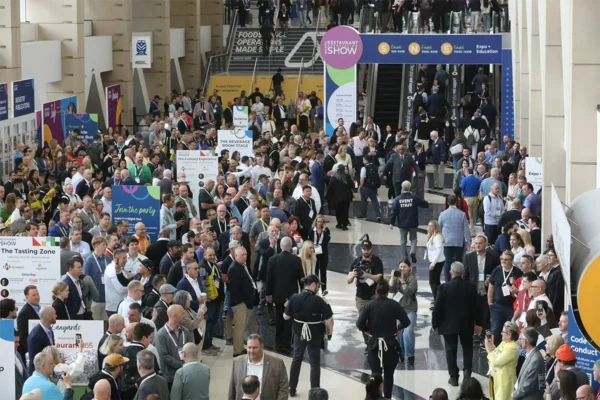Tradeshow and Event Attendees Prove Their Economic Worth by Rod Cameron (pictured above), exec. director AIPC and JMIC
With many destinations feeling increasing pressures and even community backlash from growing numbers of visitors, particularly as these are driven further into traditional residential areas courtesy of accommodation sharing vehicles like AirBnB, it’s time to take a step back and critically re-assess the kinds of returns generated by various visitors that would justify these impacts.
In that regard, it must be said that pious pronouncements aside, all visitors are not equal–and the sooner we come to grips with that reality the easier it becomes to make intelligent decisions about which groups are most worth accepting and, in fact, pursuing. And by almost all measures, the benefits and legacies derived from participants in organized events like meetings, conventions and exhibitions far outweigh those of the average leisure visitor, for a number of easily demonstrated reasons:
The first arises from the very purpose of the visit, which in the case of the latter group is invariably related to professional, academic or economic advancement, some of which always rubs off on the host community. A major medical event leaves behind a legacy of awareness, new techniques and specialized knowledge accessible to local practitioners; a business event offers an opportunity for profiling the destination and its investment opportunities and attracting new talent, while an academic event creates important opportunities for knowledge transfer, new networks and exposure for local research. In every case there is a residual benefit to the host that goes far beyond what might be expected from someone just there to take in the sights.
Secondly, even the most basic measure–the spending-based economic impact derived from a visitor–weighs heavily in favor of the delegate, for two reasons. First, the average daily spend by an event participant generally far exceeds that of a leisure visitor, and not just because of the demographics; such a visitor is far more likely to be financially supported to attend and thus able to afford higher level accommodation as well as devote more to personal spending. But it doesn’t end there. Each delegate also creates an additional requirement for organizers and an attraction for related groups like exhibitors, sponsors and supporters, all of whom bring incremental spending that is a direct consequence of that delegate attending in the first place.
Third, it is important to realize that in many cases a delegate represents an entirely new market opportunity–the primary purpose of their visit is to attend their event, which means they would otherwise not necessarily have come to that destination at all. Having come for the meeting–and if they like what they see–many subsequently return for a repeat visit, perhaps with family in tow. The result is both immediate and potential future benefits from an audience who would otherwise have been hard to reach.
And finally, in a time when the ”creep” of tourists from established visitor precincts into residential areas is becoming a source of local friction, delegates are far more likely to stay in areas associated with commercial accommodation than to avail themselves of shared alternatives. Again, this is partly a result of the fact that these are people more likely to be supported in their expenses and less likely to need to search for less expensive alternatives. But it is also a result of their need to be close to the facilities where events are taking place–like a convention centre or hotel venue–which are most likely to be in commercial or visitor precincts that have been designed to manage such groups with a minimum of disruption.
And all this is not to say that these incremental benefits come at the expense of more typical visitor spending–event participants are every bit as likely to engage in other leisure activities like restaurant dining, shopping and visiting attractions as are their leisure counterparts–in fact they are, in many respects, even more likely to do so as a result of activities organized in association with the event that expose the destination in addition to the less structured time they have available to explore on their own.
As members of the meetings industry, these are all factors we need to be thinking about as elements of the discussions we have with our communities and governments. At a time when many different interests are competing for attention and resources from both, and when decision makers are having to make tough choices, they are powerful arguments as to why what we do serves the broadest range of community interests–and why our audiences should therefore be seen as the highest priorities for visitor-related investment.
AIPC represents a global network of over 185 leading centres in 59 countries with the active involvement of more than 900 management-level professionals worldwide. AIPC is committed to excellence in convention centre mgmt. and maintains educational, research, networking and standards programs to achieve this For more info, visit www.aipc.org or contact marianne.de.raay@aipc.org. For more details on this research, see AIPC Advisory: Research Creates a Road Map for Industry Advocacy on our website.
This story originally appeared in the January/February 2018 issue of Exhibit City News magazine, p. 56. For more pictures and original layout, visit https://issuu.com/exhibitcitynews/docs/jan-feb_ecn2018.






























